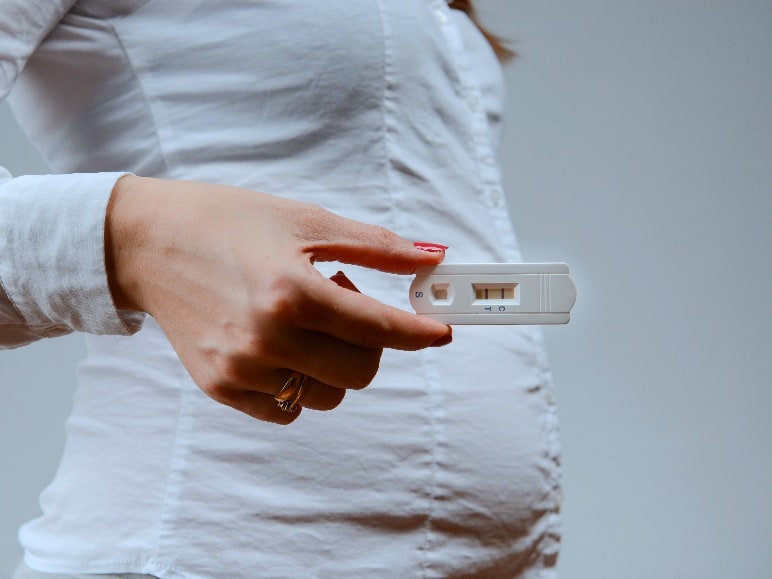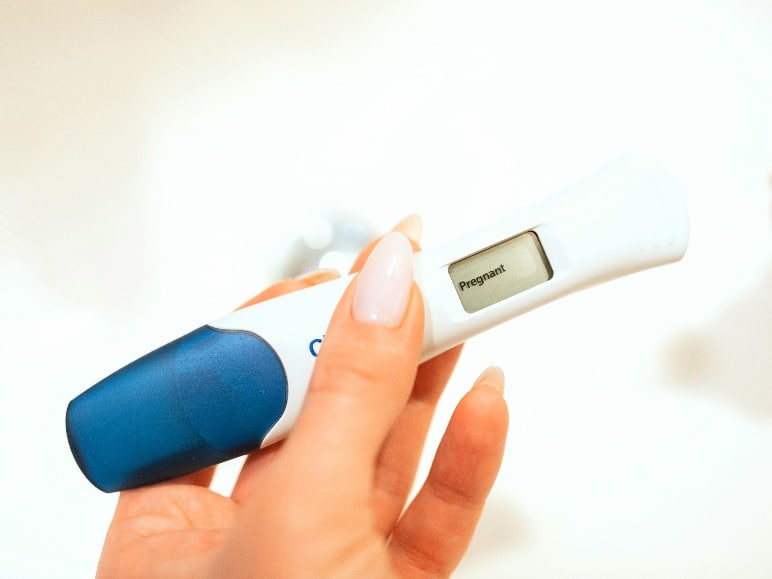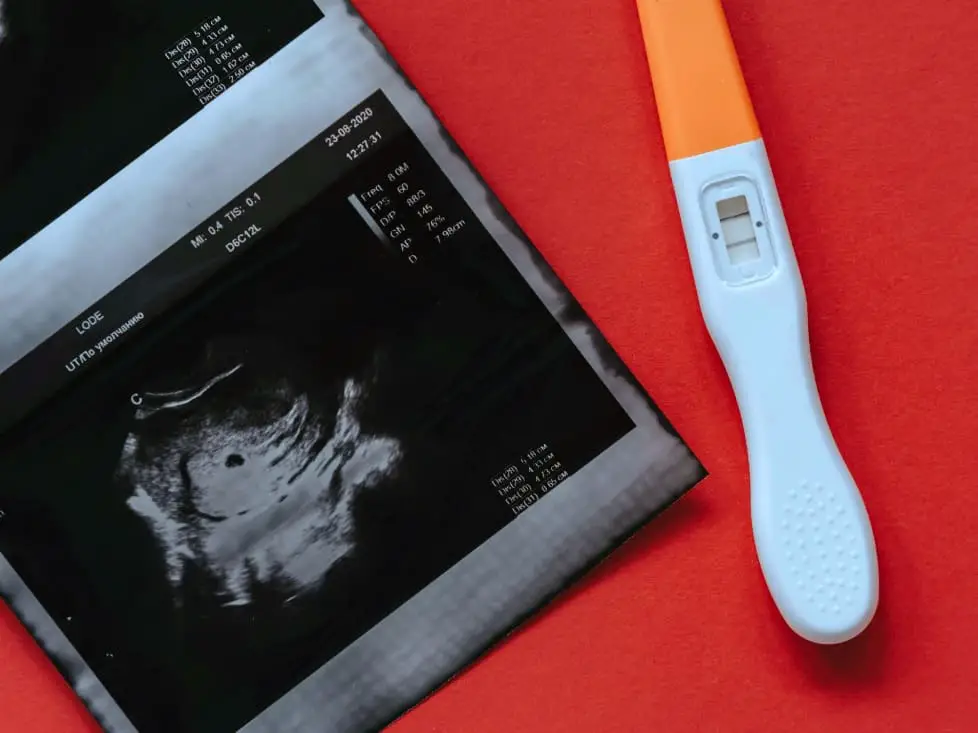
How does a pregnancy test work?
A pregnancy test detects the hormone human chorionic gonadotropin (hCG) in the urine. The woman pees on a stick, and the result appears after a few minutes. This particular hormone only appears in a woman’s body during pregnancy. It is produced a few days after the fertilized egg cell implants in the uterine lining.
Are you wondering whether you are pregnant? As soon as you notice some of the first signs of pregnancy, you certainly would like to know for sure. With a pregnancy test, you can determine for yourself whether you are pregnant or not.
But how does a pregnancy test work?
The answer is actually quite simple. Basically, you pee on a stick and wait for one or two lines to appear. One means you are not pregnant, and two mean you are.
A pregnancy test works through measuring and displaying the hCG in your urine. The first appearing line is a control line to be sure the pregnancy test is working accordingly. The second appearing line means there has been hCG in your urine.
Hcg concentration is measured in International Units (IU) per liter. Initially, the value doubles every 2.5 days until it levels out around 45,000 IU/l from the 8th to 10th week of pregnancy.

Disclosure: MyMommyHeart is a participant in the Amazon Services LLC Associates Program, an affiliate advertising program designed to provide a means for sites to earn advertising fees by advertising and linking to amazon.com
How to take a pregnancy test
Different manufacturers produce slightly different pregnancy tests. Usually, they all come with a step-by-step manual. It guides you on how to take the specific test.
Generally, it will look something like this:
- Take the test stick out of the foil package and pull the cap off if necessary.
- Hold the absorbent test tip in the urine stream for 5 seconds. Or, soak it in a urine specimen collected in a clean, dry container for 5 to 20 seconds.
- Hold the absorbent test tip down while testing. Never turn the test stick with the absorbent test tip upwards.
- If available, put the cap back on.
- Lay the test stick flat.
- Wait for 1 to 3 minutes.
- Read the result.
There are usually two viewing windows in the test sticks. One is used as a control to see whether the test works. The other window is the result window. Depending on the manufacturer, either a colored line, a plus or minus sign, or, in digital tests, clearly “pregnant” or “not pregnant” appears.
If possible, use morning urine to test. Since it contains higher concentrations of hCG, pregnancy can be detected better and earlier.
If you are expecting to be pregnant and the urine test is negative, it is possible that not enough hCG has been produced. You could repeat the test after one or two days.
How accurate is a pregnancy test?
The pregnancy tests have become more and more sensitive over the years. If you use one correctly, it is very reliable. According to an article on insider.com, the result of a pregnancy test is 99% accurate.
However, in the first weeks of pregnancy, the hormone concentration in the urine can also be below the detection limit of a pregnancy test. In that case, you would get a false negative result when you test too early.
On the contrary, the possibility of a false-positive result is very, very small. It can be caused by chorionic cell carcinoma and other germ cell tumors. Such illnesses can also cause the body to produce the hormone hCG.
If you tested positive a couple of days before your period and now still have your period, it means that there was a fertilized egg trying to implant in your uterine wall. However, most likely a fault in the development of the baby in the first few days after conception has led to an early miscarriage. In this case, you might not even have noticed the pregnancy if it wasn’t for the positive test.
How soon can I take a pregnancy test?
There are specific early detection pregnancy tests that you can use from the 8th to the 10th day after conception. How does a pregnancy test with early detection work?
The tests differ according to the following classification:
- 10 test: a reaction from a concentration of 10 IU (= international units) hCG per liter urine: detects a pregnancy from the 8th day of conception
- 25 test: a reaction from 25 IU hCG per liter urine: detects a pregnancy from the 10th day of conception
- 50 test: a reaction from 50 IU hCG per liter urine: detects a pregnancy from the first day after missing your period
Check your specific product guide to find out how sensitive your test is. Read what day it is intended for to be taken.
Where can I get a pregnancy test?
The pregnancy tests which you can take at home are usually available in pharmacies and drugstores. Sometimes you can also find them in department stores or order them online.
Get yours on amazon here!
What type of pregnancy tests are available?
Besides the analog tests which show you one or two line(s) as a result, there are also digital tests on the market. They display the out-come as a text.
These tests do not offer increased accuracy. However, at least you won’t have to try to interpret a super fine line. In case your hCG levels are still low, an analog test might not show clearly yet.

What alternatives to a pregnancy test at home do I have?
There are mainly two alternatives to a pregnancy test at home. If you are unsure or want a confirmation of your result, you can go see your provider.
- Blood test
In between 7 to 10 days after fertilization you can do a blood test to have hCG levels measured in your body.
- Ultrasound examination
An ultrasound scan can determine pregnancy from around the sixth week of pregnancy. In most cases, only the implantation of the embryo in the uterus is visible. The baby itself can usually only be seen later.

So, how does a pregnancy test work? Now you know.
Get a test and find out if you are pregnant today!
Read more about early signs of pregnancy before your missed period here.
Already fighting morning sickness? Check out these tips for pregnancy nausea.
Or if you want to find out all about birth control, check out this article.



Its so important to understand how exams work and what they mean for your family
This is so informative! Especially for someone who may be trying to conceive!
Good information
And you are right, these tests are getting sensitive year by year. I used a simple stripe when I was expecting my daughter and it showed a faint positive even before 2 days I was due.